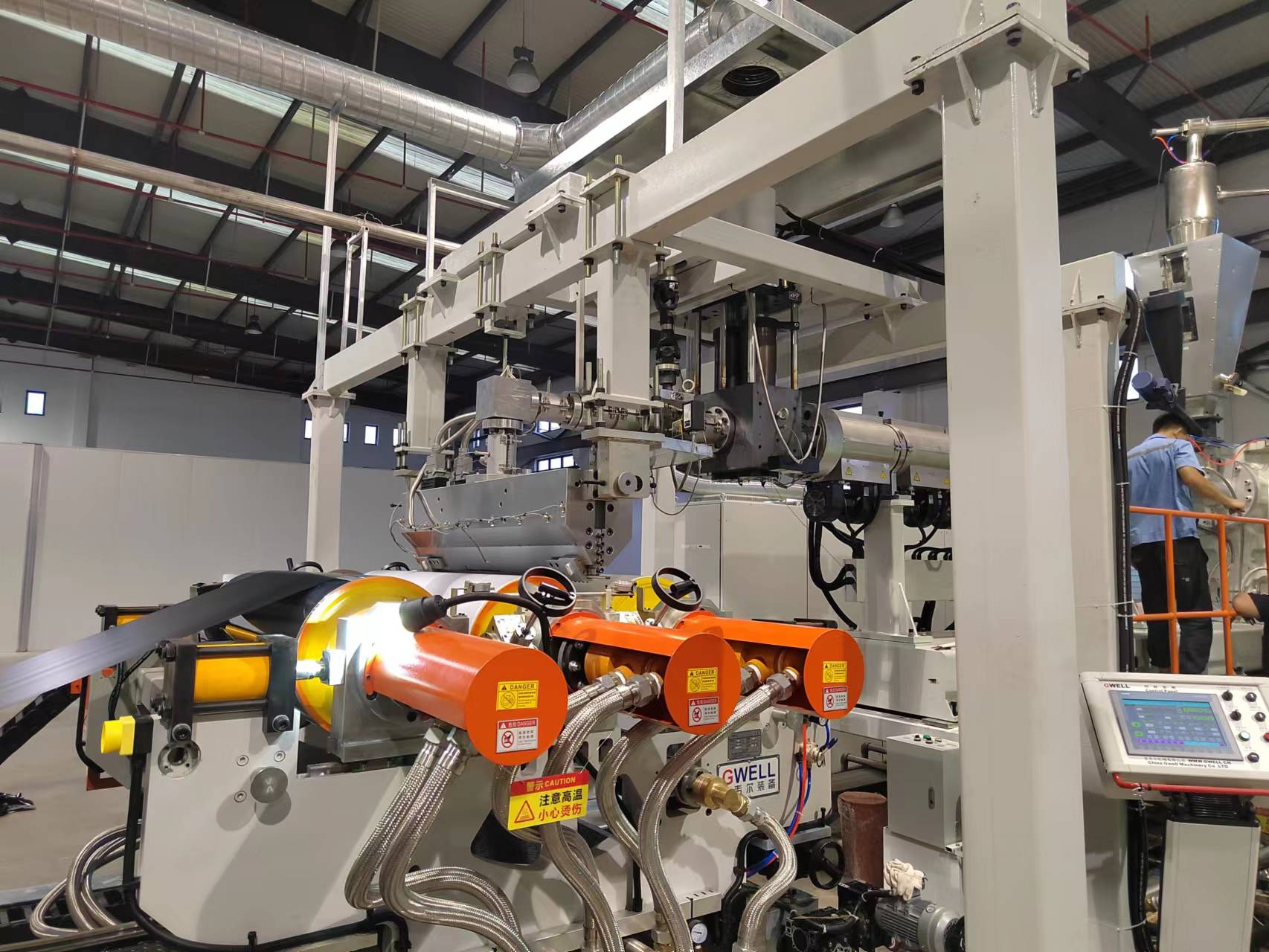Core technology and production process
The PE battery separator is a key component of lead-acid batteries, and its production line integrates chemical, mechanical, and electronic control. The main process is as follows:
Raw material mixing
Formula: Ultra high molecular weight polyethylene (UHMW-PE), nano silica (SiO ₂), carbon black, antioxidant, and process oil.
Equipment: Automatic metering feeding system (accuracy ± 0.5%), which forcibly extrudes molten materials through a twin-screw extruder.
Forming and Rolling
Extrusion molding: The molten material is formed into a continuous substrate through a sheet die, and the thickness is controlled by a five roll calender (accuracy ± 0.015mm) to ensure uniform structure.
Micro porous forming
Extraction and degreasing: Using trichloroethylene to dissolve process oil, a microporous structure with a porosity of about 60% and a pore size of<1 μ m is formed.
Environmental recycling: The condensation adsorption device recovers solvents with a recovery rate of ≥ 95%.
Post processing and slitting
Surface treatment: Coating with anionic surfactants to enhance hydrophilicity, and cutting into specified sizes after drying.
twin screw extruder
Function: Achieve nanoscale dispersion of UHMW-PE and inorganic fillers to ensure material uniformity.
Technical highlights: The liquid injection system dynamically adjusts the proportion of process oil and optimizes the pore structure.
Five roll calender
Accuracy control: The roller gap is ± 0.015mm, and it is matched with an independent mold temperature machine (temperature control accuracy ± 1 ℃) to ensure thickness consistency.
on-line monitoring system
Infrared hole detector: Real time detection of aperture defects (alarm threshold 4 μ m), linked with PLC to achieve closed-loop control.
Environmental recycling device
Condensation adsorption integration: The recovery rate of trichloroethylene is ≥ 95%, which meets environmental standards.
4、 Industrial Applications and Future Trends
Adaptation scenario
Starting type battery: high rate discharge performance supports automotive electrical loads (such as air conditioning and audio).
Energy storage battery: Ultra thin design enhances energy density and adapts to the demand for new energy storage.
Technical iteration direction
Pore optimization: By using high structured SiO ₂, the porosity can be increased to over 65%.
Tear resistance improvement: Adopting an "S" - shaped rib design to enhance longitudinal strength.
Intelligent upgrade: Introducing AI visual detection to achieve online prediction and optimization of pore structure.
5、 Challenges and Solutions
Pore rate bottleneck: Compared to ultrafine glass fiber separators (pore rate of 70%~80%), PE separators still have room for improvement in pore rate.
Countermeasure: Develop a graded extraction process and precisely regulate pore distribution.
Longitudinal tearing risk: Molecular chain orientation leads to weaker longitudinal strength than transverse strength.
Countermeasure: Composite glass fiber reinforcement layer to enhance structural stability.









